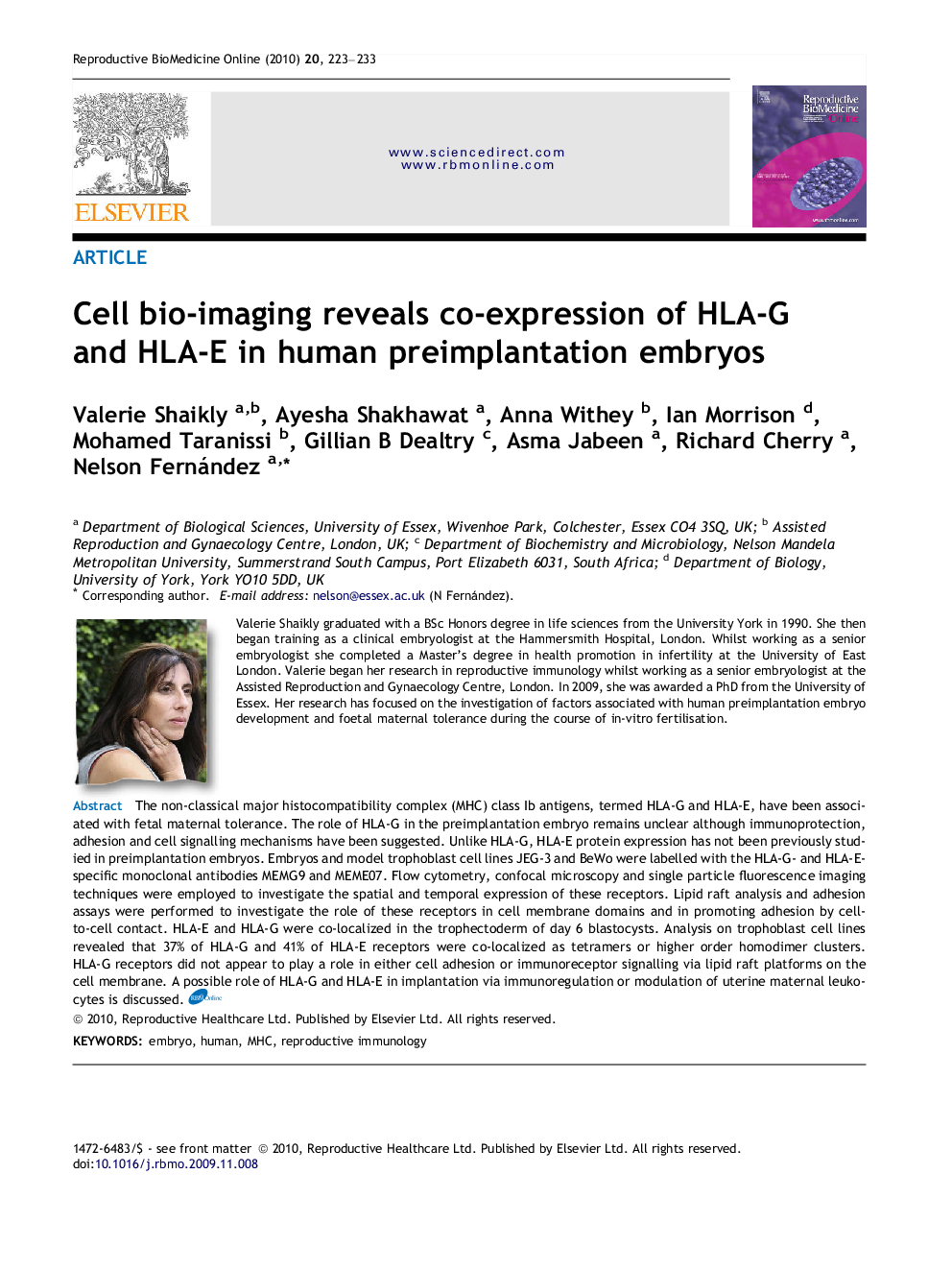| Article ID | Journal | Published Year | Pages | File Type |
|---|---|---|---|---|
| 3971010 | Reproductive BioMedicine Online | 2010 | 11 Pages |
The non-classical major histocompatibility complex (MHC) class Ib antigens, termed HLA-G and HLA-E, have been associated with fetal maternal tolerance. The role of HLA-G in the preimplantation embryo remains unclear although immunoprotection, adhesion and cell signalling mechanisms have been suggested. Unlike HLA-G, HLA-E protein expression has not been previously studied in preimplantation embryos. Embryos and model trophoblast cell lines JEG-3 and BeWo were labelled with the HLA-G- and HLA-E-specific monoclonal antibodies MEMG9 and MEME07. Flow cytometry, confocal microscopy and single particle fluorescence imaging techniques were employed to investigate the spatial and temporal expression of these receptors. Lipid raft analysis and adhesion assays were performed to investigate the role of these receptors in cell membrane domains and in promoting adhesion by cell-to-cell contact. HLA-E and HLA-G were co-localized in the trophectoderm of day 6 blastocysts. Analysis on trophoblast cell lines revealed that 37% of HLA-G and 41% of HLA-E receptors were co-localized as tetramers or higher order homodimer clusters. HLA-G receptors did not appear to play a role in either cell adhesion or immunoreceptor signalling via lipid raft platforms on the cell membrane. A possible role of HLA-G and HLA-E in implantation via immunoregulation or modulation of uterine maternal leukocytes is discussed.
